Charles H. Tweed applied to the Angle school in Pasadena in 1925 but was refused admittance. Angle told him to study and to become more serious about orthodontics. He applied again and was accepted. Members of his class were Glen Terwilliger, Ken Terwilliger, Charles DePerteus, and Bruce Curran.
A letter from Glen Terwilliger describes the course of study undertaken by Tweed and his classmates. It also gives insight into orthodontic training during that period in history. The letter, displayed on the wall at the Charles Tweed Memorial Center, states:
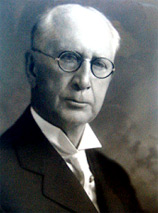
Edward H. Angle
"Preparation for the Angle School was a serious manner which involved refresher work on basic subjects, such as Embryology, Dental Histology, Osteology, Head and Neck Anatomy, and Dr. Angle's Seventh Edition. Under the supervision of the graduates of the Angle School, Drs. Hahn, Selzer, Huberty, Grover and Mackenzie, preparation was undertaken and continued from four to six months. Other requirements were that we dispose of our general practices. We were joined by Dr. Charles DePerteus of San Francisco, and Dr. Bruce Curran, who had prepared in Cleveland, Ohio. When it was time for the class to begin at the Angle school, we were notified that it would be closed – there would be no course given, and perhaps, would remain closed indefinitely. (With all of the fine, formal orthodontic education available today, it is difficult to realize that Dr. Angle was the only orthodontist in the country who was concerned with the need for a comprehensive course of training).
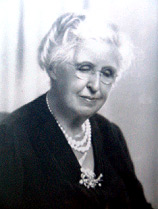
"Mother" Angle
Drs. Hahn, Huberty, and Selzer realized the seriousness of our positions, and offered a plan to duplicate for us a course of training as they had taken it under Dr. Angle in Pasadena. Our group consisted of Charles (Tweed), my brother Ken, Bruce Curran, DePerteus and me. Adjoining rooms were obtained in the Koerber Bldg, in Berkeley – one was outfitted with all essentials for the technical training that had been given in Pasadena – the exercises were identical in number and quality. All exercises were designed to acquaint students with precision appliance requirements, and to develop freehand precision skill.
The second room was for lectures and seminars. Here, we undertook a serious detailed study of the subjects involved in our preliminary preparation. Dr. Atkinson furnished material for head and neck dissection, and taught for a week or two – Dr. Furby, who had taught with Dr. Angle in Pasadena, was also with us for a while. On his way home from the Islands, Dr. Angle was a guest of Dr. Hahn, and gave us two lectures, "The Mill" and "Facial Art."
The duration of our course was 8 months and approximately 1800 hours. In addition to the scientific studies, Dr. Angle's courses were always accompanied by a reading list with book reviews, and our assignments were:
Kenilworth, By Sir Walter Scott
Yosemite, by john Muir
The Story of My Boyhood Youth, by John Muir
Two Years Before the Mast, by Richard Henry Dana, Jr.
Men of the Old Stone Age, by Henry Fairchild Osborn
The life of the Bee, by Morris Maeterlinck
A Paper on a Famous Painter
The life on Lincoln, by Lard Charnwood
Papers on Malocclusion
Orthodontia
Orthodontic History
The Line of Occlusion, by Dr. Edward Angle
The Mill, by Dr. Edward Angle
At the close of our course in Berkeley, it was time for Dr. Angle to be preparing the manuscript of The Edgewise Arch Mechanism (The Latest and the Best). Illustrations were needed. Charles and Bruce Currant went directly from Berkeley to Pasadena, and under Dr. Angle's supervision produced the proper drawings."
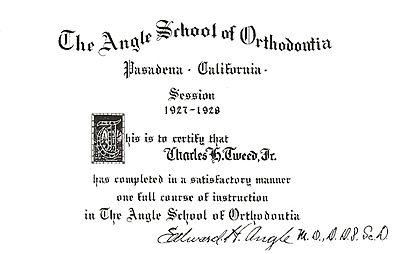
Tweed’s diploma from the Angle School
Angle and Tweed worked closely together for the last two years of Angle's life. Tweed banded his patients with an edgewise appliance and Angle acted as the advisor. The system worked in the following manner: Tweed made progress records of his patients every 4 months. He packed the records in a suitcase and took them to Pasadena, where Angle studied them and outlined a treatment plan for the next 4 months. This was repeated every 4 months for the next 2 years. This was a very productive time during Tweed's education and for the evolving edgewise appliance. Angle was so pleased with Tweed's work, that he was instrumental in making it possible for Tweed to be invited to give lectures at several orthodontic meetings.
In 1932, Tweed published his first article in The Angle Orthodontist. It was titled "Reports of Cases Treated with the Edgewise Arch Mechanism." Tweed held to Angle's firm conviction that the practitioner must adhere to the line of occlusion concept and never extract teeth. This conviction lasted for 3 years after Angle's death.
After 5 years of orthodontic practice, Tweed became disheartened with his work for two reasons: (1) the protrusive faces that he was creating, and (2) the unstable dentitions. He became so disappointed that he almost left orthodontics. He resolved to study his many failures and his few successes by devoting each morning he was in his office to the making of progress records of his patients. After studying these records, he came to realize that the patients who had pleasing facial balance and harmony also had mandibular incisors that were upright over basal bone. He selected some failures, extracted first premolars, and retreated them. He reached the conclusion that carefully planned extractions allowed him to improve appearance as well as stability. Tweed wrote, "Foresight caught up with hindsight," and the diagnostic facial triangle was born.
By 1940 he had records of 100 patients, treated first without extractions and then retreated with extractions. He put these patient records on display at an American Association of Orthodontists (AAO) meeting. Although it was a tremendous exhibit, he was severely criticized by many orthodontists of the era.
It was about this time that Tweed developed one of his favorite phrases. It was fairly typical at one of Tweed's lectures for a listener to stand up and say that Charlie had mistreated a patient or had unnecessarily extracted teeth. Tweed's standard response was "just put your plaster on the table." In other words, let the treatment speak for itself. Thus was born one of the traditions of the Tweed Foundation. To this day, at every Foundation meeting, each member brings his/her plaster and puts it on the table. Even in his seventies, Charlie never attended a meeting without his plaster.
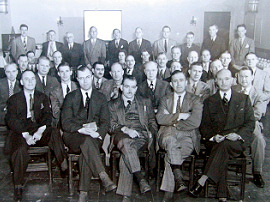
The first Tweed Study Course in 1941
Charles Tweed had detractors, but his results were so outstanding that he attracted admirers as well. An example was Dr. Robert Strang, who Angle called the "Master of the Ribbon Arch," and who had the reputation of being an excellent wire bender. He was so impressed that he converted his practice from the ribbon arch to Tweed's use of the edgewise appliance.
Tweed decided to form a study club. His first "course" was held as a study club meeting in 1941. Thirty-six orthodontists met for instruction at the first session. The group elected Sam Lewis to be its president. Copeland Sheldon was elected secretary-treasurer. In attendance at the first meeting were Robert Strang, Cecil Steiner, Bill Downs, Herb Margolis, Paul Lewis, and Hays Nance. The same group met in 1942. Because of World War II, no meetings were held in 1943, 1944, or 1945. In 1946, the group gathered again. The first week of their session was devoted to instruction for newly interested orthodontists, and the second week to a seminar for the original group. Hays Nance, the president, organized an exceptional meeting in 1947. Wendell Wylie read two papers, which were ably discussed by Herb Margolis. At this time, Hays Nance proved himself to be a major essayist with his paper entitled, "The Limitations of Orthodontic Treatment." Tweed read two papers, which were critiqued by Robert Strang, Herbert Margolis, and Wendell Wylie. It was at this meeting in 1947 that the group proposed the founding of the Charles H. Tweed Foundation for Orthodontic Research.
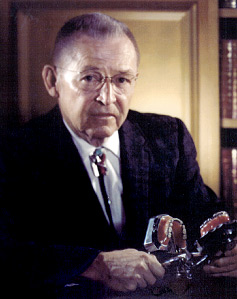
Charles H. Tweed
Angle gave orthodontics the edgewise bracket, but Tweed gave orthodontists a way to use it. The orthodontic world beat a path to his door in Tucson. Tweed, the innovative and perceptive diagnostician and master clinician, kept his promise to his mentor, Edward Angle. He devoted all 42 years of his professional life to the use and refinement of Angle's invention, the edgewise appliance.